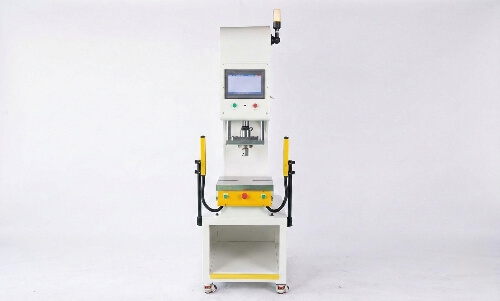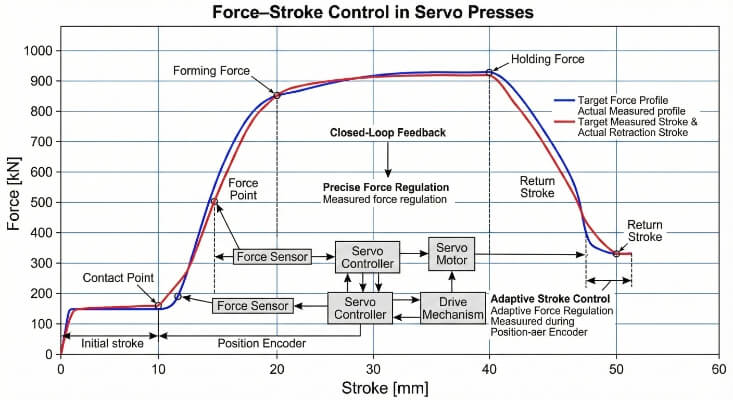Wiele zakładów obróbki skrawaniem często napotyka problemy podczas pracy ze stalą węglową. Materiał ten jest wytrzymały, ale może szybko zużywać narzędzia. Części mogą również wyginać się, a wykończenie powierzchni może nie spełniać oczekiwań klienta. Jednak wiedza o tym, jak zachowuje się stal węglowa, może wiele zmienić. Dzięki odpowiednim metodom i kilku zmianom można poprawić swoje wyniki.
Obróbka stali węglowej wymaga jasno określonych kroków, właściwego doboru narzędzi i skupienia się na szczegółach. Dobre planowanie pomaga uniknąć takich problemów, jak nadmierne zużycie narzędzia lub zniekształcenie części. Wybór odpowiednich prędkości skrawania, posuwów i chłodziw ma duże znaczenie. Zrozumienie gatunku i stanu stali pozwala uzyskać najlepsze wyniki.
Ciekawi Cię, jakie są kluczowe metody i jak uzyskać lepsze wyniki w przypadku stali węglowej? Poniższe sekcje zawierają sprawdzone wskazówki i najlepsze praktyki.
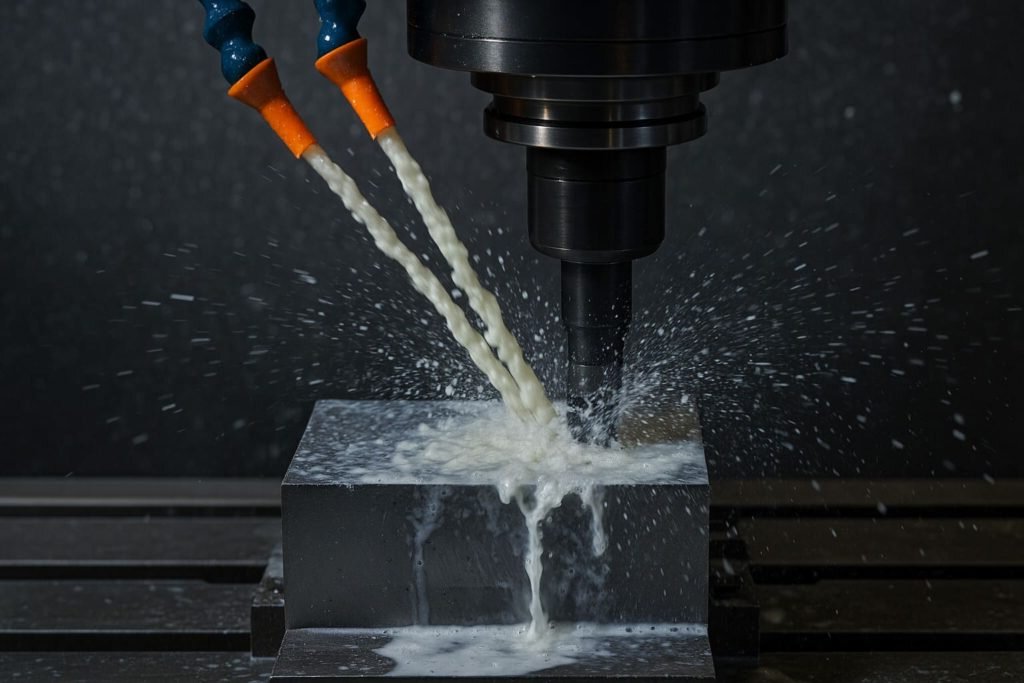
Czym jest stal węglowa?
Stal węglowa to stop składający się głównie z żelaza i węgla. Zawartość węgla zwykle waha się od 0,05% do 2,0%. Wyższe poziomy węgla sprawiają, że stal jest twardsza i mocniejsza, ale mniej plastyczna. Gatunki o niższej zawartości węgla są łatwiejsze w obróbce i formowaniu.
Obróbka stali węglowej pozwala tworzyć części dla wielu branż - motoryzacyjnej, budowlanej, narzędziowej i maszynowej. Warsztaty często pracują z tą stalą, ponieważ jest ona łatwa do pozyskania, opłacalna i dostępna w wielu gatunkach.
Rodzaje stali węglowej i ich skrawalność
Różne rodzaje stali węglowej zachowują się inaczej podczas obróbki skrawaniem. Wybór odpowiedniego gatunku stali pomaga zmniejszyć zużycie narzędzi i zwiększyć szybkość produkcji.
Stal niskowęglowa (stal miękka)
Stal niskowęglowa zawiera mniej niż 0,3% węgla. Popularne gatunki obejmują AISI 1008, 1010 i 1018. Stale te są miękkie, elastyczne i łatwe do cięcia. Są dobrym wyborem, gdy wymagana jest dłuższa żywotność narzędzia i gładkie wykończenie powierzchni. Są również odporne na pękanie podczas formowania i gięcia.
Jednakże, ponieważ są one miękkie, mogą nie trzymać dobrze drobnych gwintów lub bliskich tolerancji. Może być konieczne nieznaczne zmniejszenie prędkości posuwu, aby zapobiec rozmazywaniu powierzchni.
Stal średniowęglowa
Stal średniowęglowa zawiera od 0,3% do 0,6% węgla. Typowe gatunki to AISI 1040, 1045 i 1144. Stale te są mocniejsze i bardziej odporne na zużycie niż gatunki niskowęglowe. Są one często stosowane w częściach takich jak wały, osie i koła zębate.
Są one jednak trudniejsze w obróbce. Narzędzia zużywają się szybciej, a podczas cięcia gromadzi się ciepło. Potrzebna będzie odpowiednia kontrola wiórów, ostre narzędzia i stabilna konfiguracja. Używanie płynu tnącego pomaga zmniejszyć tarcie i ciepło.
Stal weglowa z wysoka zawartoscia wegla
Stal wysokowęglowa zawiera od 0,6% do 1,0% węgla. Typowe gatunki obejmują stale narzędziowe AISI 1080, 1095 i W1. Stale te są bardzo wytrzymałe i odporne na zużycie, co czyni je popularnym wyborem do produkcji narzędzi skrawających, matryc i sprężyn.
Obróbka tych stali jest trudna. Ich twardość powoduje szybkie zużycie narzędzi. Potrzebne będą wolniejsze prędkości skrawania, sztywne maszyny i wysokiej jakości płytki skrawające. Użycie wyżarzonego (zmiękczonego) materiału lub podgrzewanie wstępne może ułatwić obróbkę.
Wpływ zawartości węgla na właściwości skrawania
Wraz ze wzrostem zawartości węgla stal staje się twardsza i mocniejsza, ale także trudniejsza w obróbce. Stale wysokowęglowe wymagają większej mocy do cięcia, wytwarzają więcej ciepła i skracają żywotność narzędzi.
Stale niskowęglowe są łatwiejsze do cięcia. Pozwalają na szybsze skrawanie i zmniejszają zużycie narzędzi. Nie oferują jednak takiej samej wytrzymałości i trwałości.
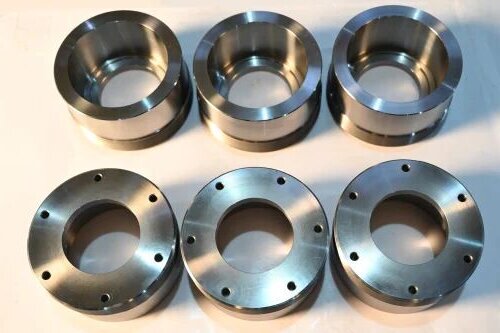
Kluczowe właściwości wpływające na skrawalność
Przed rozpoczęciem obróbki stali węglowej warto wiedzieć, jak jej właściwości fizyczne wpływają na proces skrawania. Twardość, ciągliwość i właściwości termiczne wpływają na trwałość narzędzia, prędkość i jakość wykończenia.
Twardość i wytrzymałość
Twardsza stal węglowa stawia opór podczas cięcia. Zwiększa to zużycie narzędzi i może prowadzić do szorstkiego wykończenia. Wyższa wytrzymałość wymaga również większej siły cięcia, co powoduje większe obciążenie maszyn i narzędzi.
Stale niskowęglowe są bardziej miękkie i łatwiejsze do cięcia. Ich wytrzymałość jest jednak niższa, więc części mogą wymagać dodatkowego wsparcia projektowego. Stale średnio- i wysokowęglowe wymagają wolniejszych prędkości i twardszych narzędzi, aby utrzymać wydajność.
Współczynniki ciągliwości i wytrzymałości
Plastyczność to zdolność do zginania bez pękania. Twardość to odporność na uderzenia lub nagłe działanie siły. Oba te czynniki wpływają na sposób łamania się wiórów i reakcję powierzchni podczas cięcia.
Stale o wysokiej ciągliwości mogą tworzyć długie, żylaste wióry, które zatykają narzędzia. Twardsze stale mogą być odporne na pękanie, ale wywierają większy nacisk na krawędź tnącą. Stosowanie łamaczy wiórów i dostosowywanie posuwów pomaga ograniczyć te efekty.
Przewodność cieplna i odporność na ciepło
Stal węglowa nie przenosi ciepła tak dobrze, jak niektóre inne metale. Oznacza to, że więcej ciepła pozostaje w strefie cięcia. Powoduje to szybsze zużycie narzędzia i może zniekształcić część.
Stale wysokowęglowe nagrzewają się podczas obróbki. Często wymagają dodatkowego chłodziwa lub niższych prędkości, aby pozostać w bezpiecznych zakresach temperatur. Kontrolowanie ciepła pomaga zachować kształt części i wykończenie powierzchni.
Podstawowe techniki obróbki stali węglowej
Każda metoda obróbki wymaga innych ustawień i doboru narzędzi. Stal węglowa dobrze reaguje na wiele technik cięcia, ale każda z nich musi uwzględniać twardość, ciepło i kontrolę wiórów, aby uzyskać najlepsze wyniki.
Operacje toczenia
Obrócenie służy do tworzenia okrągłych kształtów lub gładkich powierzchni zewnętrznych. W przypadku stali węglowej należy używać płytek z węglików spiekanych lub stali szybkotnącej. W przypadku stali niskowęglowej dobrze sprawdzają się wyższe prędkości i posuwy. W przypadku twardszych gatunków stali należy zmniejszyć prędkość skrawania, aby chronić narzędzia.
Narzędzie powinno być zawsze ostre. Tępe krawędzie powodują tarcie i zwiększają ciepło. Aby kontrolować temperaturę i wydłużyć żywotność narzędzia, należy stosować chłodziwo. Używaj sztywnej konfiguracji, aby uniknąć drgań i słabego wykończenia.
Strategie frezowania
Przemiał kształtuje płaskie lub wyprofilowane powierzchnie. Frezowanie spiralne jest często preferowane w przypadku stali węglowej. Zapewnia ono lepsze usuwanie wiórów i czystsze wykończenie. W przypadku miękkiej stali dobrze sprawdzają się szybsze posuwy. W przypadku twardej stali należy zwolnić i używać narzędzi powlekanych.
Sprawdź ścieżki narzędzia pod kątem płynnych przejść. Nagłe zmiany zwiększają naprężenia narzędzia i mogą spowodować złamanie płytek. Utrzymuj stałe zaangażowanie, aby zmniejszyć wibracje i poprawić jakość części.
Najlepsze praktyki w zakresie wiercenia i gwintowania
Kiedy wiercenie w stali węglowejUżywaj wierteł z ostrzem dzielonym lub wierteł kobaltowych do czystego wejścia. Należy stosować umiarkowane prędkości i stały nacisk. W przypadku głębszych otworów, wiercenie dziobakiem pomaga usunąć wióry i zredukować ciepło.
Stukający wymaga precyzyjnego ustawienia i odpowiedniego smaru. Wybierz gwintowniki przeznaczone do stali i zmniejsz prędkość, aby uniknąć zerwania gwintu. W przypadku twardszych gatunków stali należy użyć frezów do gwintów lub gwintowników walcowych, aby zminimalizować naprężenia na gwintowniku.
Metody szlifowania i wykańczania
Szlifowanie udoskonala powierzchnie i zawęża tolerancje. W przypadku stali węglowej należy używać ściernic z tlenku glinu. Należy utrzymywać niskie prędkości, aby uniknąć przegrzania. Zbyt wysoka temperatura powoduje oparzenia powierzchni lub zmiany twardości.
Po zmieleniu sprawdź, czy nie ma zadziorów lub ostrych krawędzi. Gratować i wypoleruj, aby wykończyć część. Aby uzyskać gładszą powierzchnię, użyj drobnoziarnistych pasów lub past polerskich. Pomaga to przygotować części do powlekanie, malowanielub montaż.
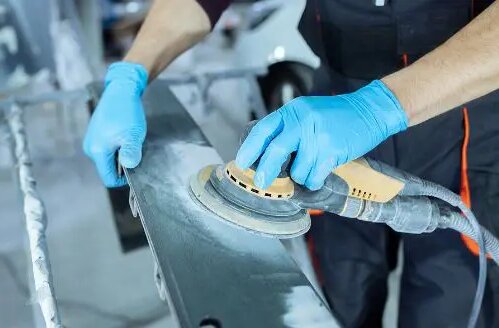
Narzędzia skrawające i materiały narzędziowe
Wybór odpowiednich narzędzi ma duże znaczenie podczas obróbki stali węglowej. Geometria narzędzia, materiał i powłoka wpływają na wydajność i trwałość narzędzia.
Najlepsze geometrie narzędzi do stali węglowej
Ostre krawędzie i odpowiednie kąty prześwitu pomagają zmniejszyć siłę cięcia. Dodatni kąt natarcia zapewnia płynniejsze cięcie i redukuje ciepło. Konstrukcja łamacza wiórów jest pomocna, zwłaszcza w przypadku ciągliwych stali węglowych, które tworzą długie wióry.
W przypadku twardszych stali mniejszy promień końcówki zapewnia lepszą kontrolę i zmniejsza nacisk narzędzia. Zawsze należy dopasować geometrię do rodzaju stali i metody cięcia, aby uniknąć wibracji i odprysków krawędzi.
Narzędzia z węglików spiekanych a narzędzia ze stali szybkotnącej (HSS)
Narzędzia z węglików spiekanych są bardziej złożone i trwalsze. Są odporne na zużycie i lepiej sprawdzają się przy dużych prędkościach. Najlepiej sprawdzają się w przypadku stali o średniej i wysokiej zawartości węgla lub podczas cięcia dużych partii.
Narzędzia HSS są tańsze i łatwiejsze do szlifowania. Nadają się do stali niskowęglowej lub krótkich serii. Należy ich używać do cięcia miękkich materiałów lub gdy liczy się koszt.
Powłoki wydłużające żywotność narzędzi
Powłoki poprawiają odporność na zużycie, zmniejszają tarcie i kontrolują ciepło. Azotek tytanu (TiN) jest powszechnym wyborem do ogólnej obróbki. Dobrze sprawdza się na stalach o niskiej i średniej zawartości węgla.
W przypadku bardziej wymagających zadań należy użyć węglikoazotku tytanu (TiCN) lub azotku tytanu i aluminium (TiAlN). Powłoki te przenoszą więcej ciepła i wydłużają żywotność narzędzi na twardszych stalach.
Parametry obróbki i optymalizacja
Dostrojenie ustawień obróbki pomaga zmniejszyć zużycie narzędzi, poprawić jakość powierzchni i zwiększyć produktywność. Odpowiednio dobrane prędkości, posuwy i chłodziwo sprawiają, że obróbka stali węglowej jest bardziej stabilna i powtarzalna.
Prędkości i kanały
Rozpocznij od niższych prędkości skrawania dla twardszych stali węglowych, aby chronić narzędzie. W przypadku miękkich gatunków stali o niskiej zawartości węgla należy stosować wyższe prędkości. Utrzymuj stałe prędkości posuwu, aby uniknąć drgań.
Jeśli prędkość jest zbyt wysoka, narzędzia szybko się zużywają. Jeśli posuw jest zbyt niski, narzędzie może trzeć zamiast ciąć. Wartości początkowe należy podawać zgodnie z tabelami producenta narzędzia, a następnie dostosować je na podstawie wyników.
Głębokość cięcia i kontrola wiórów
Głębsze cięcia usuwają więcej materiału, ale generują więcej ciepła i naprężeń. Do obróbki zgrubnej należy wykonywać cięższe cięcia z wolniejszymi posuwami. W przypadku obróbki wykańczającej należy wykonywać lżejsze cięcia, aby poprawić dokładność i wykończenie powierzchni.
Obserwuj, jak tworzą się wióry. Długie, zawinięte wióry są standardem w przypadku stali niskowęglowej. Używaj łamaczy wiórów, aby uniknąć zatykania narzędzia. Rozsądna kontrola wiórów skraca czas przestojów i chroni krawędź narzędzia.
Techniki chłodzenia i smarowania
Płyny chłodzące obniżają temperaturę cięcia i pomagają spłukiwać wióry. Do większości prac związanych ze stalą węglową należy używać płynów rozpuszczalnych w wodzie. Stosować bezpośrednio w strefie cięcia.
W przypadku wiercenia i gwintowania lepiej sprawdzają się oleje do cięcia. Przywierają one do narzędzia i zmniejszają tarcie. Chłodziwo powinno być czyste i płynne. Słabe chłodzenie prowadzi do wypaczania części, zużycia narzędzi i szorstkich powierzchni.
Typowe wyzwania związane z obróbką stali węglowej
Obróbka stali węglowej nie zawsze przebiega gładko. Podczas cięcia może pojawić się kilka problemów. Problemy te wpływają na jakość powierzchni, dokładność części i trwałość narzędzia. Wiedza na temat tego, na co należy zwracać uwagę, pomaga wcześnie rozwiązywać problemy.
Hartowanie robocze i integralność powierzchni
Hartowanie robocze ma miejsce, gdy powierzchnia stali staje się twardsza po cięciu. Utrudnia to kolejne cięcie i zwiększa zużycie narzędzia. Może to prowadzić do chropowatych powierzchni i błędów wymiarowych.
Aby ograniczyć twardnienie, należy używać ostrych narzędzi i utrzymywać stałą prędkość posuwu. Unikaj pocierania narzędzia o powierzchnię bez cięcia. Zawsze tnij poniżej utwardzonej warstwy, aby uzyskać czyste przejście.
Zapobieganie zabudowanym krawędziom (BUE)
BUE powstaje, gdy materiał przykleja się do krawędzi narzędzia. Zmienia to kąt skrawania i prowadzi do słabego wykończenia powierzchni. Zwiększa również tarcie i może powodować złamanie narzędzia.
Aby zapobiec BUE, należy używać powlekanych narzędzi i prawidłowej prędkości cięcia. Nieznacznie zwiększ prędkość lub użyj ostrzejszej krawędzi narzędzia. Płyny chłodzące również pomagają zmniejszyć przywieranie poprzez obniżenie temperatury w punkcie styku.
Zarządzanie ciepłem i zniekształceniami termicznymi
Stal węglowa zatrzymuje ciepło w pobliżu obszaru cięcia. Nadmiar ciepła powoduje rozszerzanie się lub wypaczanie części, co prowadzi do błędów wymiarowych. Skraca również żywotność narzędzia i może pogorszyć jakość powierzchni.
Podczas obróbki części o wąskiej tolerancji należy używać wystarczającej ilości chłodziwa i skracać przejścia. W razie potrzeby pozwól części ostygnąć pomiędzy etapami. Stabilne ustawienia maszyny i ostre narzędzia również pomagają utrzymać ciepło pod kontrolą.
Wnioski
Obróbka stali węglowej wymaga odpowiedniej równowagi między znajomością materiału, wyborem narzędzi i kontrolą procesu. Każdy rodzaj stali węglowej - o niskiej, średniej lub wysokiej twardości - zachowuje się inaczej podczas skrawania. Czynniki takie jak twardość, kontrola wiórów i gromadzenie się ciepła muszą być traktowane ostrożnie, aby chronić narzędzia i utrzymać wysoką jakość części.
Potrzebujesz niestandardowych części ze stali węglowej o wąskich tolerancjach i krótkim czasie realizacji? Już dziś prześlij nam swoje rysunki lub szczegóły projektu-Nasz zespół jest gotowy, aby zaspokoić Twoje potrzeby w zakresie obróbki skrawaniem.
Hej, jestem Kevin Lee

Przez ostatnie 10 lat byłem zanurzony w różnych formach produkcji blach, dzieląc się tutaj fajnymi spostrzeżeniami z moich doświadczeń w różnych warsztatach.
Skontaktuj się z nami

Kevin Lee
Mam ponad dziesięcioletnie doświadczenie zawodowe w produkcji blach, specjalizując się w cięciu laserowym, gięciu, spawaniu i technikach obróbki powierzchni. Jako dyrektor techniczny w Shengen, jestem zaangażowany w rozwiązywanie złożonych wyzwań produkcyjnych i napędzanie innowacji i jakości w każdym projekcie.

